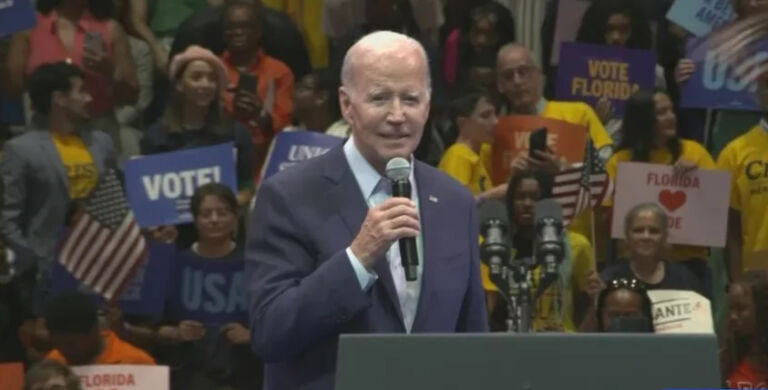Last week, President Trump signed a new Executive Order (EO), “Executive Order on Protecting and Improving Medicare for Our Nation’s Seniors.” For the most part, this EO has some thoughtful policies designed to improve Medicare. Of course, as a matter of principle, the preferred way to create a new policy would be through the legislative process. That doesn’t always happen due to the inability of Congress to function as a deliberative body.
As the title suggests, the EO requests changes to the Medicare program and Medicare Advantage plans. The EO also draws a contrast between the current Medicare system and what could happen if a Medicare for All program were implemented.
In 2018, there were a total of 59.8 million enrolled in Medicare. Around 40 million were enrolled in traditional fee-for-service Medicare (the government pays for services), and 19.8 million individuals were enrolled in a Medicare Advantage plan (enrollees use Medicare dollars to buy a privately-managed plan).
Medicare is a popular program among those who use it. However, there are inherent flaws in the program’s design. The primary problem is the number of retirees collecting benefits from the program is far higher than the number of people paying into the program. Medicare is also riddled with improper payments and fraud. As a result, Congress will face difficult decisions about Medicare soon. Implementing some of the initiatives in the new EO may start to move the program to financial solvency.
Here are some of the highlights of the Executive Order:
- Section 2: Medicare Financial Sustainability. Given the findings from the most recent Medicare Trustees Report, we should all be concerned about the financial future of Medicare. The program is paying out significantly more than it is collecting. Serious decisions will have to be made about financial sustainability soon. The EO states it is the policy of the U.S. to emphasize fiscal sustainability through new payment models, increased choice, and lower regulatory burdens.
- Section 3: Providing More Plan Choice for Seniors. The EO directs the secretary of the U.S. Department of Health and Human Services (HHS) to “propose a regulation and implement other administrative actions to enable the Medicare program to provide beneficiaries with more diverse and affordable plan choices” within one year. The EO directs the secretary to encourage innovative plan designs in Medicare MA by reducing barriers to Medical Savings Accounts and emphasizing payment models that allow beneficiaries to share more in savings by choosing high-value care. This section also requests that the secretary of HHS report on ways to modify Medicare fee-for-service payments to more closely reflect the prices of Medicare Advantage and commercial insurance. Given the disparity in payments between Medicare fee-for-service and commercial insurance, this is a troubling provision.
- Section 4: Network Adequacy. The EO directs the secretary of HHS to propose an initiative that will improve network adequacy within Medicare Advantage plans by adjusting for the competitiveness of a given health care market and encouraging enhanced use of telehealth services.
- Section 5: Doctor-Patient Relationship. Many physicians find it difficult to spend enough time with each patient due to bureaucratic and administrative requirements. The EO also directs the secretary of HHS to propose ways to increase the amount of time patients spend with doctors for better care. Suggestions for how to do this include eliminating burdensome billing and licensing requirements and a comprehensive review of regulatory policies.
- Section 6: Patient Innovation. This section directs the secretary of HHS to encourage the use of innovative practices by streamlining the approval of new products and minimize and eliminate burdensome steps for FDA coverage decisions.
- Section 7: Site Neutrality. The EO directs the secretary of HHS to ensure all Medicare payments encourage competition and a diversity of sites. Often reimbursement for the same service performed at a hospital and an outpatient facility are reimbursed very differently. Bringing more neutrality into the payments for procedures that can be performed in an outpatient facility instead of a hospital would be a welcome policy.
- Section 8: Empowering Patients. This section of the EO directs the secretary of HHS to propose rules to allow seniors to better access cost and claims data to instill more provider accountability and grant patients more power to make the right choices regarding where to get care.
- Section 9: Waste, Fraud, and Abuse. Waste, fraud, and abuse account for a significant amount of federal health care spending. The EO directs the secretary of HHS to propose new guidelines for better coordinating resources to combat waste, fraud, and abuse, including using artificial intelligence.
- Section 11: Freedom in Medicare. Before this EO, if you wanted to start collecting your Social Security benefits, you would have to enroll in Medicare first. The federal government should not condition the collection of Social security benefits on participation in Medicare. Some seniors may prefer a private plan they are already on compared to Medicare. I signed an open letter to the administration last fall, asking for this change.
We should applaud the administration for examining ways to ensure that the Medicare program runs more efficiently. It will be no small task to write effective new rules to encourage innovation, efficiency, and better care in Medicare. However, serious reform is needed to guarantee that Medicare, the highly popular health insurance program for senior citizens, can stay afloat. The effectiveness of each of these rules will depend on the exact language used. Once these rules are finalized, then we can better judge how effective they will be. Regardless, despite the health care industry’s resistance to change, our country needs to prepare for changes in Medicare soon.


